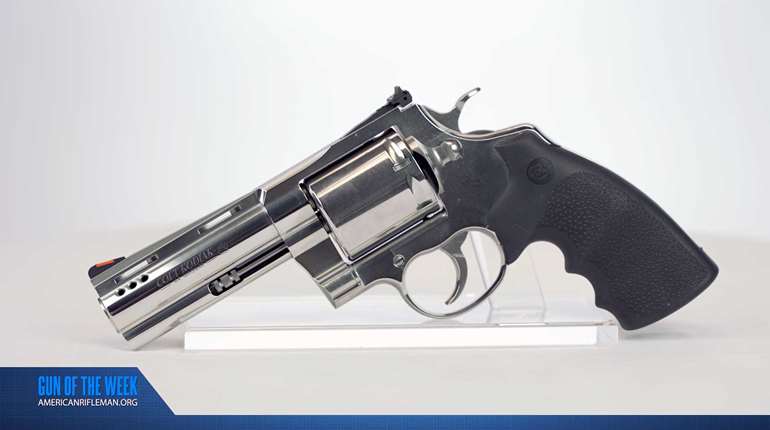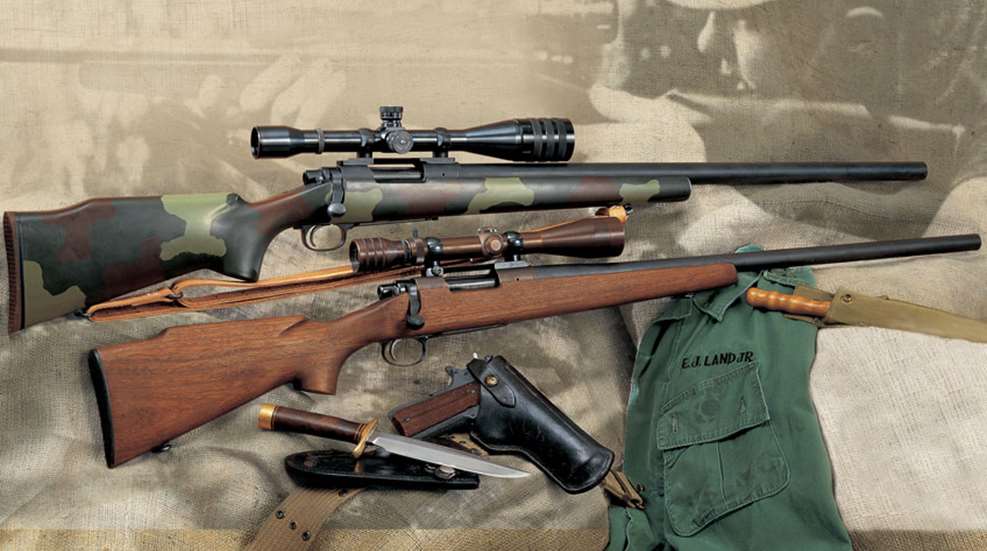
This article was first published in the February 2001 American Rifleman.
From the steaming jungles of Vietnam to the searing sands of Desert Storm, U.S. Marine Corps M40-series rifles have earned their reputation as robust, precision battlefield instruments in the skillful hands of Marine scout-snipers.
Counted among the many U.S. military small-arms developments that grew out of America's entry into the Vietnam War in the early 1960s are a number of modern-day sniper rifle systems. Both the U.S. Army and the U.S. Marine Corps eventually developed specific solutions to meet the challenges of the one-shot, long-range war. The Marines' M40, based on the Remington Model 700 sporting rifle, has become a near legendary icon of that era.
The need for a new sniper rifle system was confirmed as military battlefield planners realized the only suitable rifles available were leftovers from World War II and Korea. That included aging, but highly effective, .30-'06 Sprg.-cal. Winchester Model 70 rifles fitted with 8X Unertl scopes along with scope-sighted, semi-automatic M1C and M1D Garands. Another option involved adapting existing U.S. M14 rifles. In fact, accurized, scope-sighted M14s, later fitted with night-vision scopes, provided yeoman service to U.S. Army marksmen. The U.S. Marine Corps, however, elected to pursue a completely different approach. 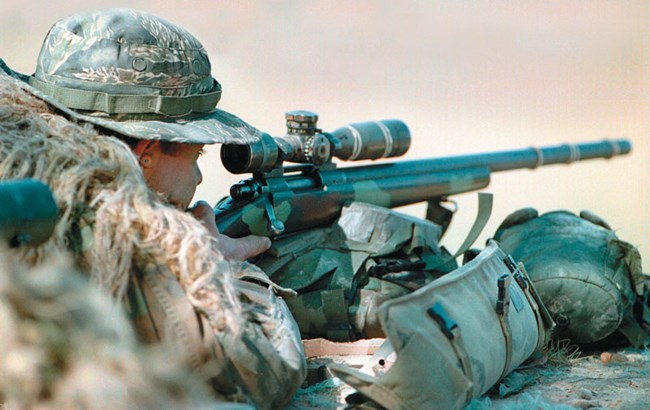
A modern-day U.S. Marine scout-sniper takes aim with his Unertl-scoped M40A1 rifle. The fixed, 10X Unertl replaced the Redfield 3-9X Accu-Range model used on earlier M40s and M40A1s and will be retained for the Corps' new rifle: the M40A3.
M40 (1966-1976)
After testing existing bolt-action rifles for accuracy, durability and immediate availability, the Marine Corps decided on the Remington Model 700. Some reports indicate that early guns procured from Remington's Ilion, N.Y., Custom Shop were built on 40X target model receivers. Nevertheless, that first batch of M40s was assembled with commercial receivers rollmarked "Remington Model 700" along with the "U.S." military property marking above the serial number. They sported free-floating, medium-weight, chromemoly steel barrels, and their actions were factory-bedded to uncheckered wood stocks. The "Rifle, 7.62mm Sniper, M40," adopted April 7, 1966, was to serve as the foundation for USMC sniper rifles for the following four decades.
NRA Secretary Edward J. Land, Jr., who served in the Marines from 1953-77 and was instrumental in developing the Corps' sniper rifle program, was a captain at the time of the M40's adoption. He remembers that the selection of the Remington rifle was made significantly more attractive by the company's interest in accommodating the Marines. "Remington was willing to work with the Corps and provided us with a custom gun ready for immediate service," he says. "Other companies weren't as willing ...." Land's involvement in the program was a natural extension of his three-year participation on the Marine Corps Rifle Team. The team had been a proving ground for the development of Marine marksmen who would later serve as scout-snipers. Perhaps the best known of those was GySgt. Carlos Hathcock whose exploits have been chronicled in print and copied on the silver screen. Specifically, Land's new role was to organize and train scout-snipers for the 1st Marine Division.
The Corps contracted for 700 rifles, and initial delivery began in 1966. Early M40s came with fixed sling swivels and a military, matte Parkerized finish. A plastic carrying case was provided by another contractor to house the rifle, scope and necessary cleaning supplies. The scope was, of course, a significant component of the M40 system. The variable-power (3-9X) Redfield Accu-Range is quickly identifiable even today by its distinct, green anodized finish. A ranging feature for firing out to 600 yds. was incorporated as part of the scope's reticle, and a sturdy, tapered scope mount furnished by Redfield was a near clone of that utilized in the World War II-era U.S. M1903A4 Springfield rifle.
Like the commercial Remington 40X rifle, the Corps' new M40 had several subtle target-rifle features. Two drilled and tapped holes on the left side of the receiver allowed for possible mounting of a rear aperture sight unit. Also, the top rear of the receiver was modified with a relief cut designed to act as a clip slot for loading cartridges from five-round stripper clips—even though the slot was not accessible underneath the scope mount.

Shortcomings of the new rifles, however, began to appear not long after they arrived "in country." Under the rigors of duty in Vietnam's high-humidity climate, the Remington's wood stock required constant attention to maintain a clear channel for the free-floating barrel. Relieving the channel by scraping swelled wood and sealing the stock to minimize expansion and contraction were necessary on a regular basis. Equipment reports from the field by various Marine divisions stationed at points ranging from Hue in the north to Hill 55 near Da Nang commented on the few rifles available for service and the many others pulled from combat duty for repairs. In June 1969, out of an allocation of 82 rifles for the 1st Marine Division Scout- Sniper Teams, only 45 remained in the field with another 22 sidelined for questionable serviceability. That record notwithstanding, renowned Marine riflemen, including Hathcock, who were intimately acquainted with the previously deployed Winchester Model 70 still had confidence that the new M40 was the "best sniping rifle available. Teamed with match-grade ammunition, the rifles proved fully up to the task at hand.
Design upgrades from the original M40 (above) to the succeeding M40A1 (below) eventually added more than 5 lbs. The Redfield scope pictured below was tested as a possible replacement for the company's originally specified Accu-Range model. Ultimately, a fixed, 10X model from Unerl was selected.
By 1973, however, a Corps-wide survey revealed that the number of available M40 rifles had dwindled to 425. The rigors of warfare in the tropics had sidelined many of the guns with pitted barrels or with optics that failed under the harsh, humid conditions. Adding to the problem was the fact that armorers were unable to obtain replacement parts. The rangefinder scale inside the Accu-Range telescope was sensitive to light through the objective, and too much exposure could literally melt it. Cracking under the variable power ring also became a problem. The signs all pointed to the same inevitable conclusion: The time had come to upgrade the old warhorse. 
The new M40A3 rifle retains the same purpose-built Unertl 10X scope design (l.) found on later M40A1 rifles.
M40A1 (1977-Present)
In 1977, the Marine Corps finalized its decision to revitalize the M40 system by rebarreling and restocking the original actions to yield superior rifles. Modifications included welding the internal magazine box and recoil lug directly to the receiver to form a unified assembly. Also, the original Model 700 aluminum trigger guard and magazine floorplate assemblies were replaced with modified Winchester Model 70 units made of steel. The M40's original 24", chromemoly Remington barrels were replaced in favor of Atkinson stainless tubes finished with a black oxide coating. Finally, the problem of moisture susceptibility inherent in the M40's original wood stock was solved by replacement with fiberglass McMillan stocks finished in green and earthtone red camouflage. Also, additional barreled actions were ordered from Remington to replace those that had been worn out or lost.
The various upgrades would exact a discernable price from snipers in the field. Weight of the M40A 1 ran 12 lbs.— nearly 3 lbs. more than its ancestor. "A lot of people engineered in capabilities beyond the rifle's original concept. But they didn't have to take the thing into the field and live with it for a week, either," reflects Land. Along with the heavier barrel, additional steel components and beefier stock, the M40A1 was about to take on even more weight in the form of a completely new purpose-built scope. 
Although the Corps had hand-picked the Redfield Accu-Range, its choices had been limited to off-the-shelf optics. Ideally, a new scope would be designed specifically in accordance with Marine scout-sniper requirements. Given the relatively small number of units required, however, the pending contract did not interest many commercial manufacturers. The answer came around 1980 in the form of an entirely new model from a small, highly respected maker of rifle scopes whose reputation among target rifle enthusiasts was more than well-established. Indeed, the name Unertl was synonymous with long-range, high-magnification optics for precision rifle shooting. The Marines themselves had used Unertls in World War II, Korea and Vietnam. At little more than 12" overall, though, the newest Unertl model was much shorter than the maker's typical target scopes of years past. The new Unertl was also stouter. Unlike the Redfield, it was constructed with a steel tube and featured thick optical elements with high-efficiency coatings. Complementing the new optic were Unertl-made rings and a Unertl mount with lugs that interfaced with the receiver's top in such a way as to discourage impacts from separating the scope from its rifle.
The Unertl's simple adjustments were calibrated to the M118 Lake City Match sniper-standard ammunition. And, perhaps, most significantly, the new scope featured a completely new reticle: the milliradian dot or "mil-dot." The latter feature, which consists of a series of tiny, precisely positioned dots suspended along both horizontal and vertical crosshairs, remains the standard of military and law enforcement marksmen today.
According to Land, a noted authority on USMC sniping, the steel tube of the Unertl literally has been demonstrated robust enough to "drive tent pegs" and still hold zero. Still, in conjunction with the other component needs of the mission payload for a USMC sniper, the M40A1 had, at 14.5 lbs., become a true heavyweight. Its improved, heftier design provided significant clues to the composition of its successor. The Marines are already at work building replacements for the 527 M40A 1 "Semper Fi" heavyweights remaining in active service throughout the Corps today. (See the sidebar beginning on p. 37.) The new M40A3 will add more than 3 lbs. of additional weight—something Land views as unnecessary. "We had very few shots at 1,000 yds. and about 50 percent hit probability on extended-range shots," he says. "But instead, a decision was made to add more weight to the gun for use in perhaps ten percent of the work. That may prove detrimental to the shooter's mobility." Nevertheless, when Land reflects on the Marines' original choice for the Remington M40 over other, less certain, possibilities, he says, "We didn't have time to wait for something we'd never get—so we went with what seemed to be the best rifle at the time. It was a great choice."
The M40A3: Ultimate Marine Sniper Tool?
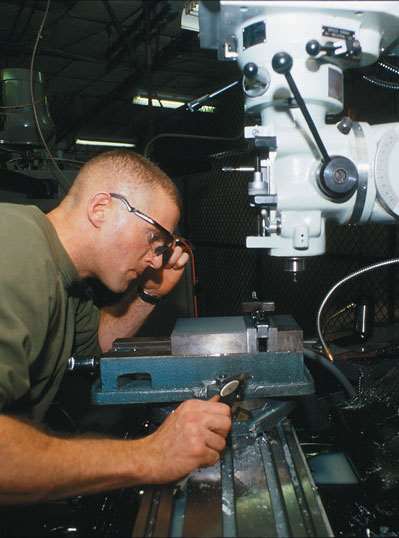
The evolution of the U.S. Marine Corps' Remington Model 700-based rifle marches on fully 35 years after its genesis in the Vietnam War with final development of the M40A3. (An M40A2 designation was skipped because it already was assigned to an unrelated piece of military equipment.)
Since the beginning of the M40 program, the process of building a Marine scout-sniper rifle has moved farther toward selection, procurement, and in-house modification and blueprinting of "off-the-shelf" commercial components. Today, the Corps' Precision Weapons Facility, located next to the USMC Scout-Sniper School of the Weapons Training Battalion at Marine Corps Combat Development Command in Quantico, Va., is a beehive of gun maintenance and development.
Officer-in-Charge Ken M. Davis says the facility built 30 prototype M40A3 rifles in 1999 with "substantial input" from the tactical rifle community. Eventually, says Davis, "600 or so" M40A3s will be built with production slated to begin by June 2001. He says most of the remaining M4Os and M40A1s will likely be scrapped with the possibility of a small quantity finding their way into museum displays or foreign military sales.
Davis says that once production is up and running, advanced CNC equipment will yield a new M40A3 rifle every two days as opposed to the week-long cycle that was required to produce one M40A1. 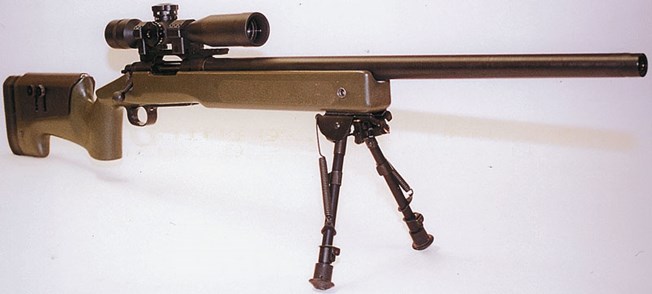
The M40A3 prototype rifles combine the best commercially available components. The one-piece, steel trigger guard/floorplate unit and optical platform (r.) mark departures from previous rifles.
And in a significant departure from previous M40-series rifles, the new guns will be equipped with sound suppressors. Even though that will contribute even more weight to the already substantial 18- lb. rifle system, according to Davis, "These are some pretty stout lads [who] go through the sniper school." 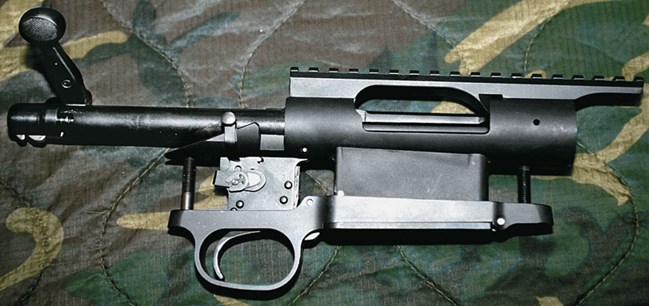
Appropriately, the M40A3s will begin their service lives with new, commercial, Model 700 short-action receivers right off the Remington assembly line. Davis and those who came before him have, since 1966, rebuilt guns assembled as original M40s as many as six or seven times. Some of those rifles, which are fired much more than the typical hunting rifle, had begun to fail gauge checks or, worse, exhibit slam fires.
In a departure from previous procurements, the new generation of rifles will benefit from components that are more nearly customized to Marine specifications. Cross-trained weapons facility armorers, using modern industry-type quality assurance standards, begin the guns' nearalchemical transformation by discarding factory barrels, trigger guards, floorplates and other components. Receiver tops are relief cut to accommodate loading the rifle from stripper clips—with a rear slot acting as the clip guide and a concave front cut allowing passage of bullet tips and serving as a "groove" for a matching "tongue" on a semi-custom-made optical platform. The rail-type mount is made with 30 degrees of downward tilt to accommodate elevation adjustments for firing out to 1,000 yds. Their top surfaces are flat-ground; optical mount holes are enlarged from commercial standard 6-48 size to accept 8-40 screws; then they are trued and faced before the bolt lugs are lapped to a perfect fit with the receiver recesses. As was done on later M40A1s, the magazine box is welded to the receiver and then to a new 5/16"-thick stainless steel recoil lug made in-house. The new blackened stainless steel, heavy contour barrels feature a recessed crown and threaded muzzle. They have been optimized for a new ammunition developed with input from the Marine Corps Rifle Team. In lieu of M118 Special Ball, a new Lake City-manufactured load designated "AA11" will feature a match-quality case and will launch a 175-gr. Sierra MatchKing boattail bullet at up to 2680 f.p.s. from the muzzle. Added to the newly barreled action is a one-piece floorplate/trigger guard unit made of steel.
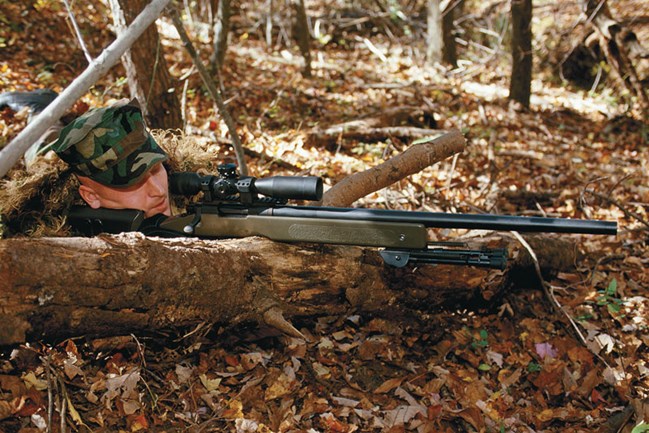
Production of the new M40A3 Marine sniper rifle is set to begin by June 2001.
The fiberglass chassis for the new action comes from renowned Phoenix, Ariz., stockmaker McMillan, which supplied the original non-wood stocks for late M40A1s. The new A-4 stock is fitted with multiple sets of flush-mounted, quick-detach sling swivel sockets that allow sling attachment to either side or to the bottom of the rifle. An installed QD stud at the fore-end allows mounting of a Harris benchrest-type bipod. Other nods to modernity include a more nearly vertical pistol grip, a butt hook to facilitate grasping by the weak hand when shooting from the prone position, an adjustable cheekpiece and removable recoil pad spacers. The latter two features allow Marine snipers a modest degree of individual customization on the otherwise made-to-pattern rifles.
Marine armorers fabricate their own aluminum pillars and fit them in the stock during the bedding process. After the actions are skim-glassed, rifles fire three five-round groups at 300 yds. to ensure one m.o.a. accuracy. The barrel and ammunition combination has produced excellent results including several five-shot, sub-m.o.a. groups fired at 1,000 yds.
Rifles finally receive a thorough cleaning, bead blasting and medium bluing before being inspected for overall quality control and quality assurance. The finished rifles are accessorized with a number of commercial items including an Otis Technology cleaning kit, a Devtron Scopecoat optics cover and a Pelican Products hard case.
—Brian C. Sheetz, Senior Executive Editor













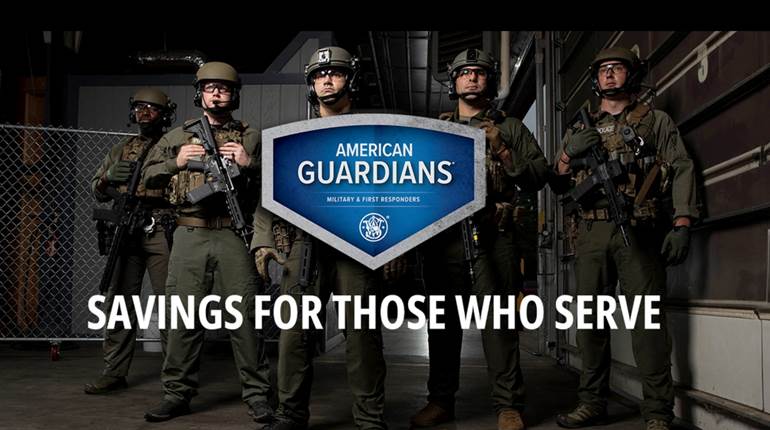

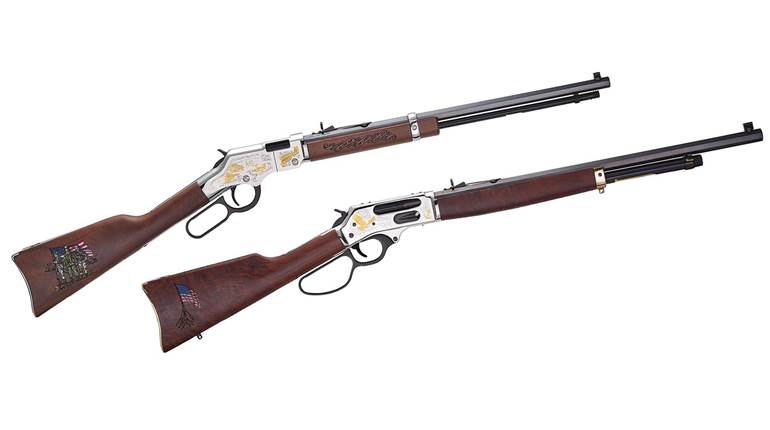
![Auto[47]](/media/121jogez/auto-47.jpg?anchor=center&mode=crop&width=770&height=430&rnd=134090788010670000&quality=60)






